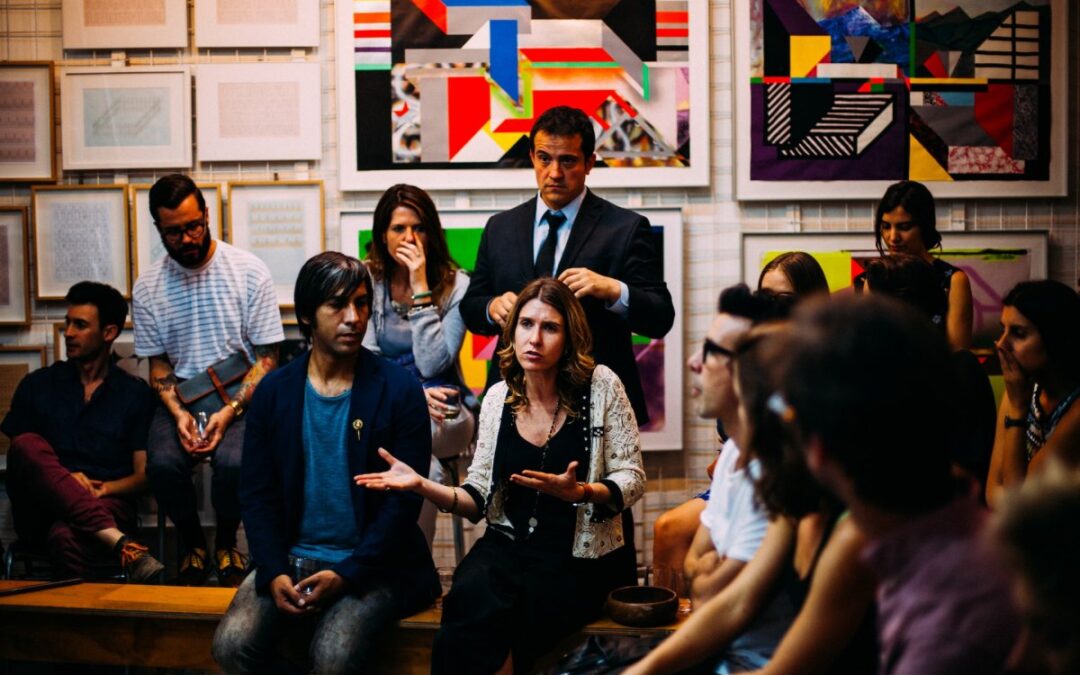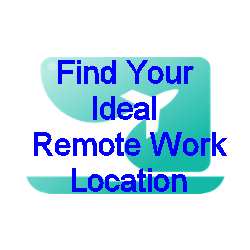One of the main reasons that some leaders say people need to get back to the office is because the office is a better place for collaboration. And while this is true, it’s also a myth. They are comparing how we work individually versus together as opposed to the location. Collaboration can take place anywhere where people can gather. It does not need to take place in an office. When was the last time you had a meaningful collaboration in an office setting? Chances are it was separate from your normal work in either a retreat or off-site scenario. People rarely have meaningful collaborations in the office. It just becomes background activities. Organizations that are focused on their remote workers are much more likely to be intentional about establishing times for collaboration. It might still be in an office setting, but could also be a meetup, a company gathering, or organized get-togethers by teams.
Intentional Collaboration
Most collaboration in an office setting happens just by being there. Meetings are more or less on autopilot. Often it is just a matter of catching someone in the hallway or at their desk at the right time. But how much of it is meaningful? or even productive? Probably not much.
Being remote means in-person collaboration requires a bit more planning and forethought. So why not make it meaningful at the same time? Stacking experiences can make them more meaningful. There have been studies of dating where couples who went on one date and did 4 different things felt closer than couples going on 4 dates doing different things each time. Stacking doesn’t just have to be activities, they can be sensory as well. Location, time of day, music, food, entertainment, art, etc. can all help to create stacked experiences that make them more meaningful.
Making Collaboration Meaningful
Meaningful collaboration is a term that is largely missing from office culture. If you are lucky, the average office meeting includes a room, a place to sit, and maybe an agenda. If it’s before 9 am maybe you might be lucky enough to get bagels or donuts. It’s not the office’s fault it doesn’t inspire us. It’s a dressed-up outgrowth of the factories of the last century. It was designed for an assembly line of people doing some sort of paper-based work. Over time we layered in computers and the internet. This took away the need for the need to physically move the work to the next applicable cubicle, but many leaders didn’t notice. We continued to use the same space, to do the same functions, even though technology allowed other options.
When we move past the office as the default location for collaboration, there are a variety of options for different collaboration purposes and budgets. And companies that are scaling back on their offices, they can often afford to cover the cost of various options and still save money.
The Coffee Shop
The coffee shop is often an individual destination, but it can also be a great collaboration location for a small group. Between the decadent flavored coffees, some tasty pastries, comfortable seating, and some cool jazz, coffee shops can be an oasis of ambiance for those working remotely. While you are probably short on table space, coffee shops can be great places to compare notes and share ideas. The ambiance and the food make your time together a little more meaningful.
Co-Working Spaces
Co-working spaces may not have the dining options of a coffee shop, but they offer the opportunity to work in some very unique spaces. It could be a converted factory, or something overlooking the Manhattan skyline. Co-Working spaces are generally designed to impress from an architectural or design perspective. Depending on what your needs are, you can generally schedule them as needed, or on some regular basis. Some of the larger co-working providers such as WeWork have subscription options that allow you to use locations all over the world. Co-working spaces have business needs in mind, so you don’t need to hunt for the wifi password or worry about a single-stall bathroom. There are probably whiteboards, conference calling, and printing options. And when you are done collaborating, you can go back to your remote location until the next time you need a shared space.
Retreat Locations
Maybe you are bringing a larger group together and you want something a bit more intimate than a shared co-working space. You can do it yourself through AirBnB or VRBO, or use a company like SurfOffice which has picked out locations all over the world for you to get together and collaborate. They have over 100 locations that they have already done the legwork on so there are no surprises.
Cruises
Most people don’t think of working on cruise ships, much less bringing the team along to work. Most of the larger ships have everything you need – food, accommodations, entertainment, and working space. If you need an auditorium for 500, it’s usually just a matter of scheduling. Smaller spaces for up to 20 people are usually available in multiple locations around the ship. Satellite internet is generally reliable, affordable, and comparable to what you would have on land. And if you want to put on a presentation and record it, most cruise ships have video production capabilities. Cruises are also nice because you can craft meaningful experiences for your staff around a variety of activities. Whether it’s zip lining, climbing a pyramid, taking a cooking class, or just working while overlooking the Caribbean, there are plenty of opportunities for meaningful collaboration.
Curated Locations and Experiences
Back on dry land, there are still opportunities to include the types of experiences you might find on a cruise ship. It’s going to be location-dependent, and you probably are going to need a little help. Maybe it’s a lesson in the supply chain by visiting the farm where all your food is coming from before dinner. Or perhaps a balloon ride over the vineyard you are staying at. While it sounds like we are planning a vacation, there is still work going on in all these locations. We are just taking an extra step to make the experience memorable and to create connections. By creating connections to the work and among the people working, there is higher retention and more willingness to share ideas.
Mastermind Experiences
Masterminds are a different type of collaboration since they aren’t usually intended for teams or even the same company. They are generally for individuals and they can be in person, online, or a combination. The higher-end version can be highly curated experiences. And in most cases, if you have to ask how much, you probably can’t afford it.
There are lots of masterminds out there ranging from free to six figures just to join. It’s a great way to collaborate with others at your level and share ideas. I have found masterminds at a coffee shop valuable, and I would love to try some of the higher-level options out there. Rob Murgatroyd hosts a mastermind in different places around the world. Whether it’s working out with an NFL trainer or driving vintage cars through Tuscany, Rob brings the concept of a mastermind to a new level. By intentionally creating unique collaborative experiences, we can make both our work and personal lives more meaningful.
Final Thoughts
This is the tip of the iceberg of what is possible when it comes to collaboration. Putting lots of people in the same space has never been the recipe for collaboration. It was often the ancillary activities of the office where that took place. It might have been the business lunch, the evening cocktails, or more frequently that time on the golf course. Even before Covid, those things were going away. Between 2003 and 2018 almost 7 million fewer people picked up a golf club. Two years of people being out of the office destroyed the options for business lunches, and cocktails aren’t the same when you spend your days in sweatpants. These were part of the collaboration fabric for many businesses. The office was just the jumping-off location for them to happen. Take that out of the equation and we need to rethink how and where we collaborate. Thankfully, there is a world of opportunities beyond the office for us to choose from.



